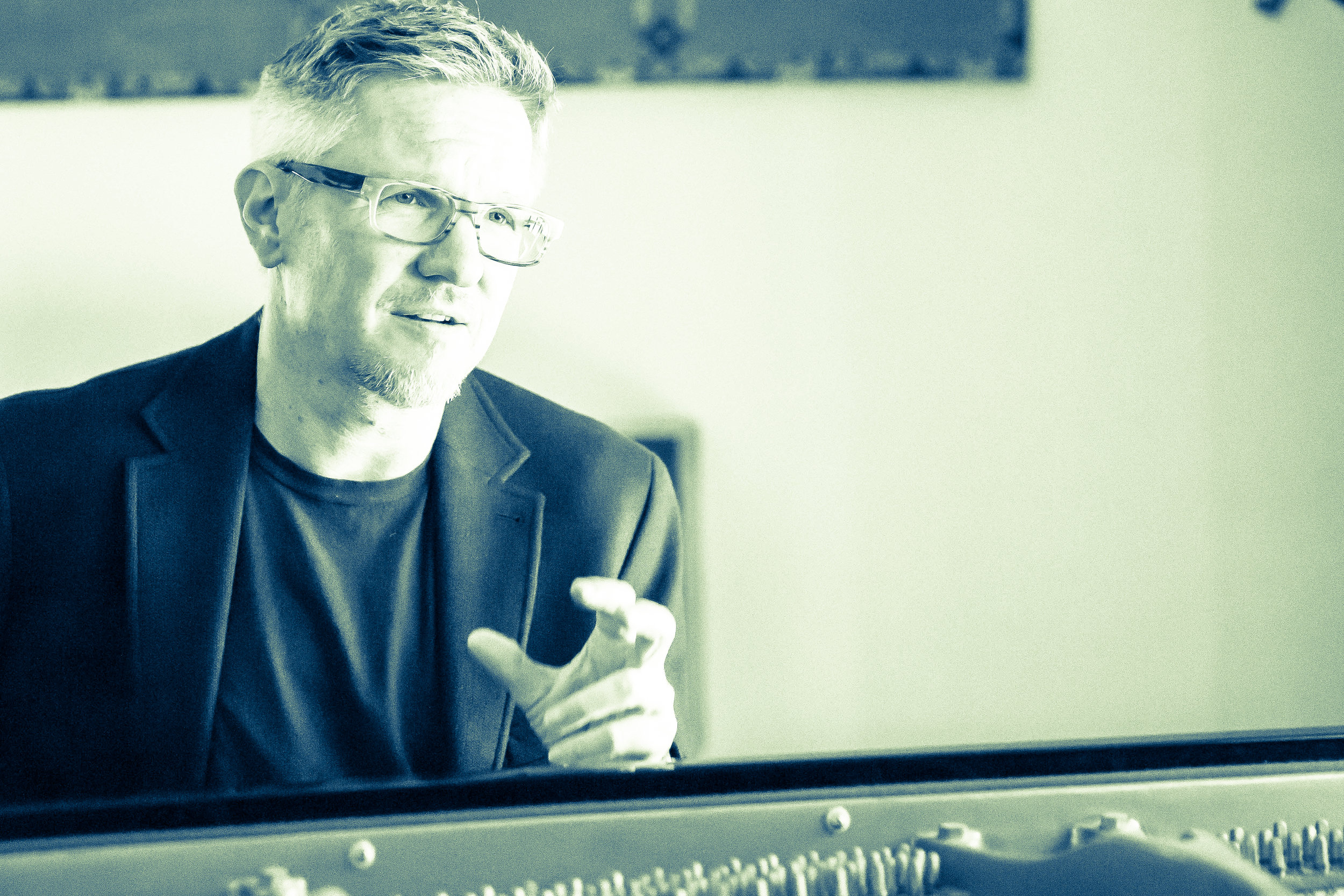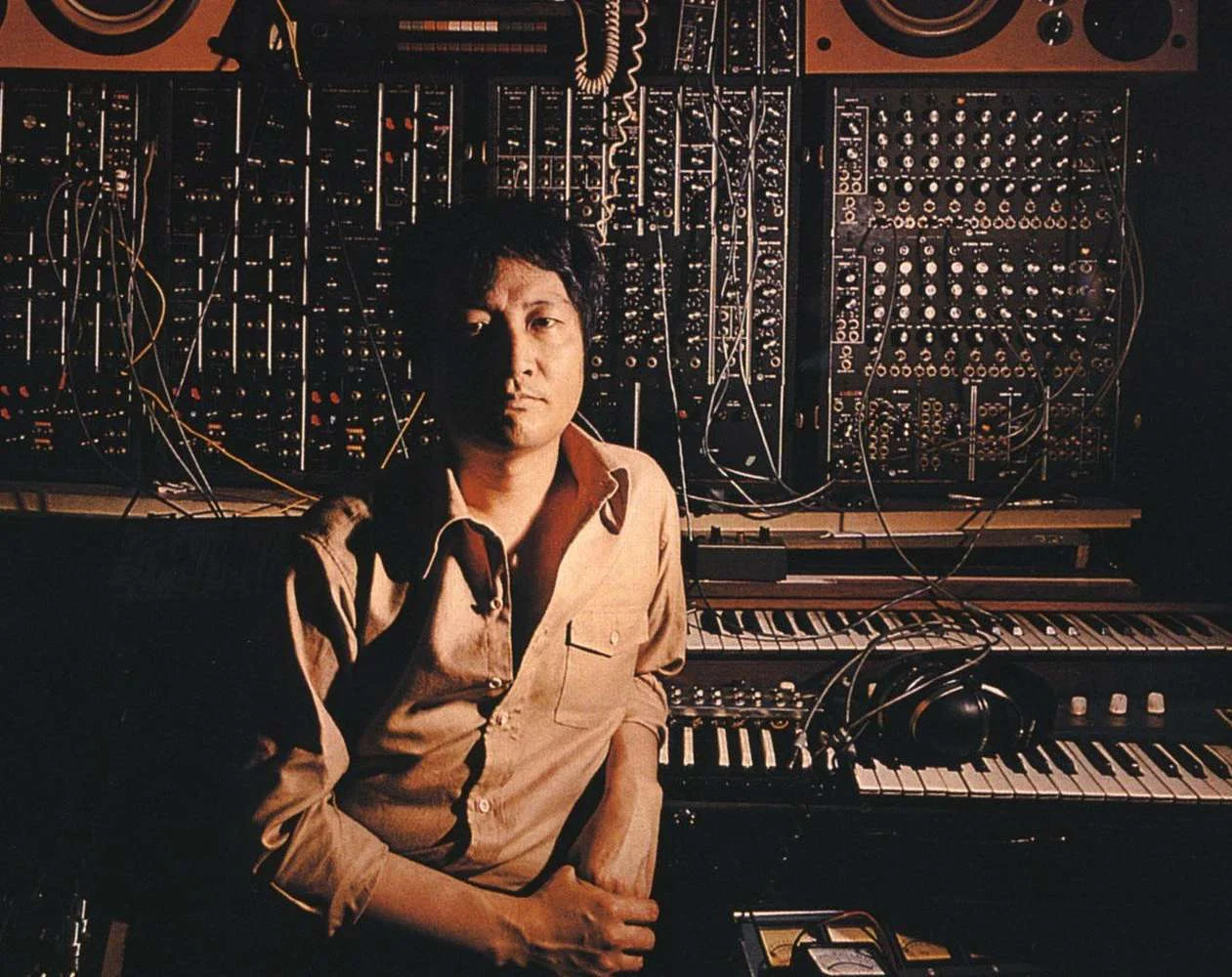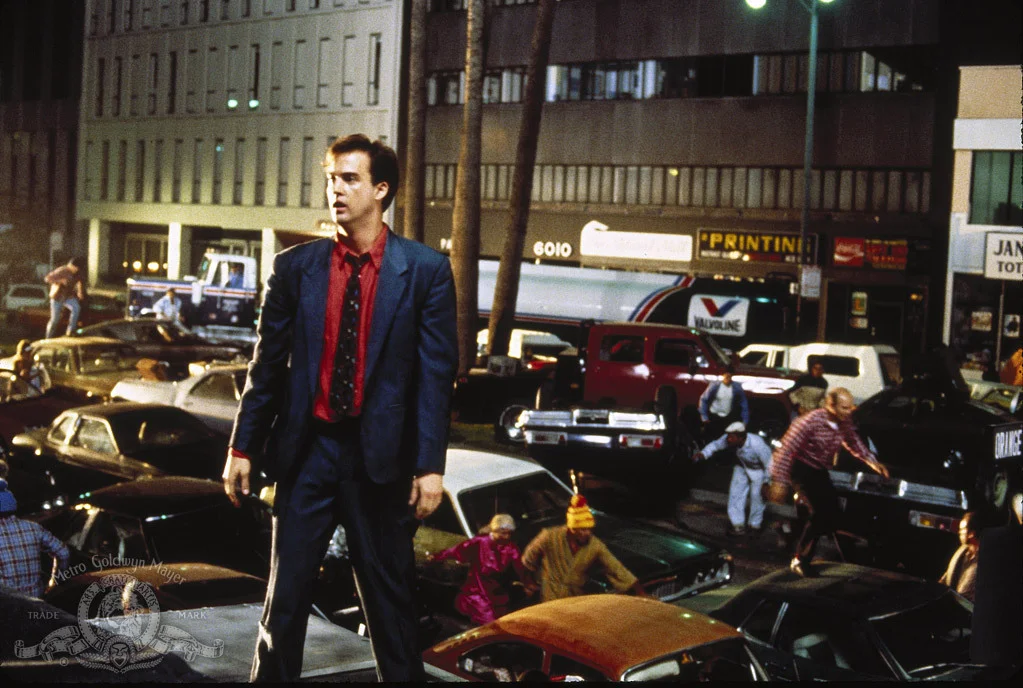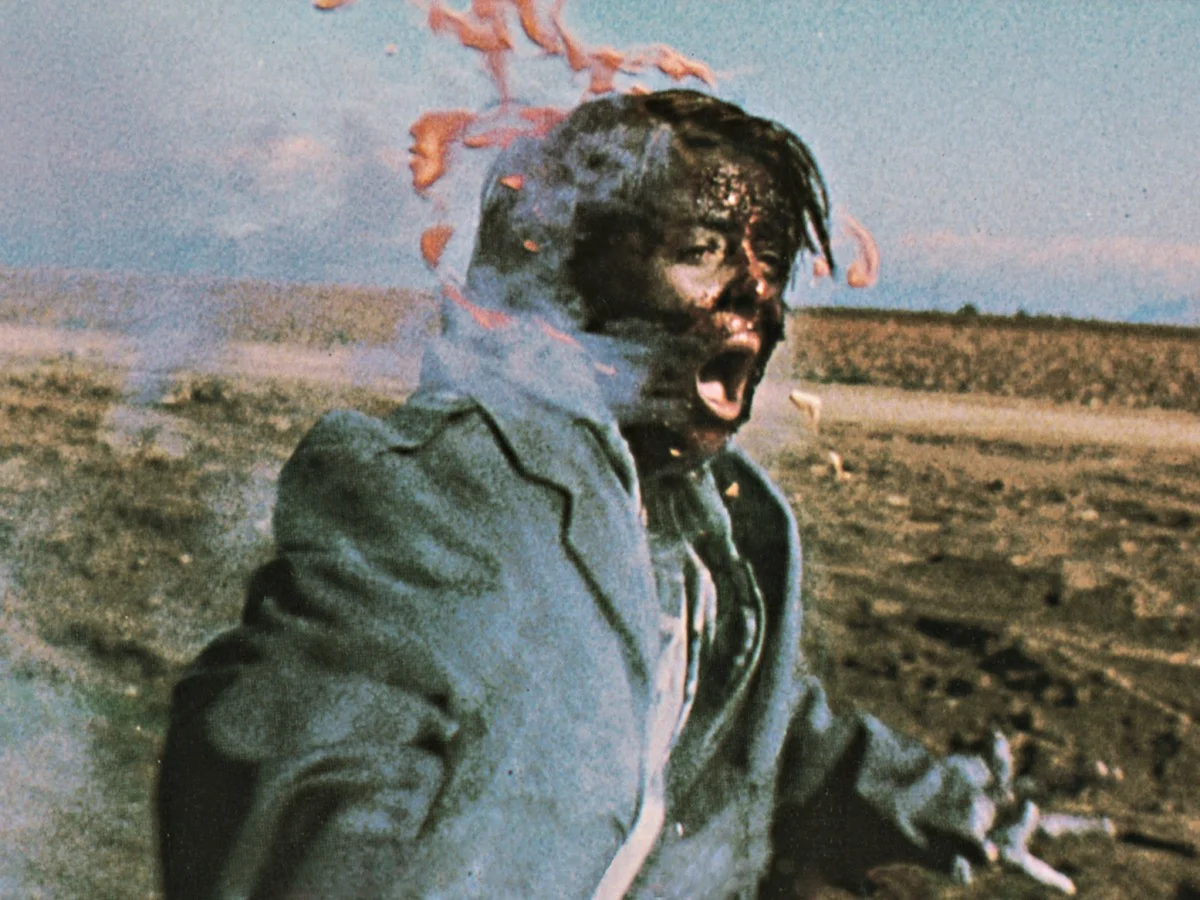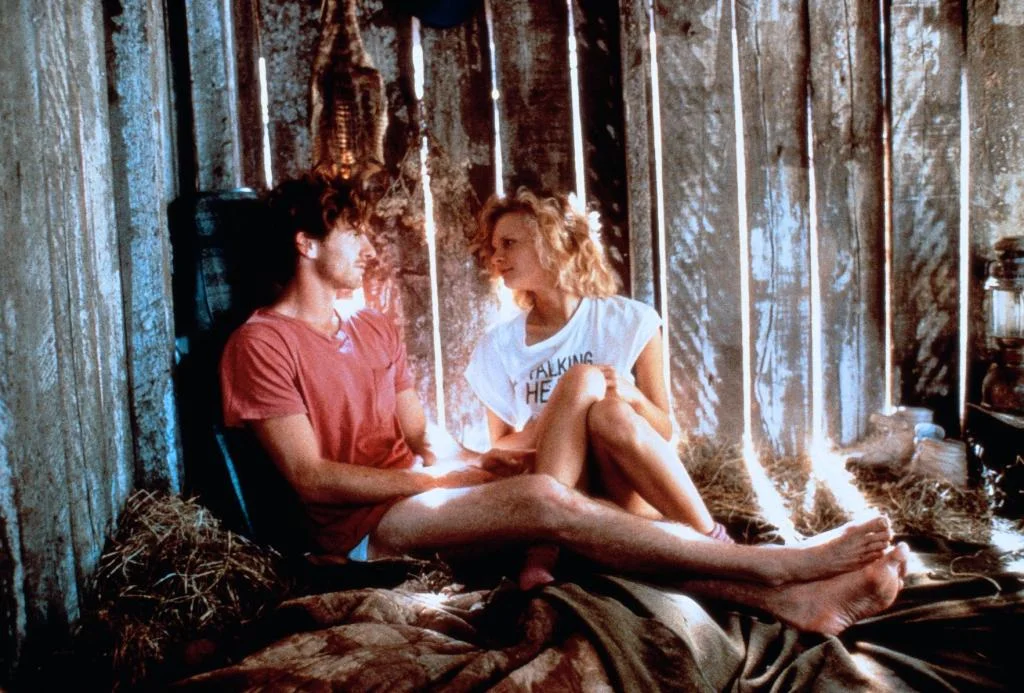Paul Haslinger
Paul Haslinger is the groundbreaking Emmy and Grammy nominated musical visionary behind captivating films and television series including Halt and Catch Fire, Underworld, Fear The Walking Dead, Death Race, Wildling, Crank, Sleeper Cell, The Three Musketeers, Blue Crush, Shoot ‘Em Up, The Girl Next Door, and the Resident Evil franchise. At the age of 23, Paul was sought out by Edgar Froese and invited to join Tangerine Dream. Over five years with the legendary group, Paul embarked on four international tours, recorded fifteen albums, and participated in the creation of scores for Miracle Mile, Near Dark, Shy People, and Canyon Dreams. In search of new horizons in 1991, Paul relocated to Los Angeles and worked with the likes of Christopher Franke and Graeme Revell before establishing himself as one of the thought leaders of film music. Beyond his limitless technical ingenuity and sophisticated craftsmanship, Paul’s capacity to articulate emotion is transcendent. In our enlightening exchange, Paul discusses how he reimagined the electronic instrumentation of his formative years to shape the sonic identity of Halt and Catch Fire and interpreted Mötley Crüe’s darkest moments with a stylized, psychological approach for Jeff Tremaine’s The Dirt.
Source: Augusta Quirk | IFC
I understand that you are a classically trained musician, having studied at both Vienna's Academy of Music and the University of Vienna in your native Austria. What initiated your pursuit of music making and how were you introduced to electronic music as an art form?
My classical studies, at the time, were mostly appeasement exercises towards my parents who felt I needed a proper job. If it had to be music, I should become a teacher or something. My personal interests were clearly elsewhere — getting my hands on keyboards and studio equipment and starting to play in bands. I certainly did not mind the classical studies and found quite a bit of satisfaction in figuring out how everything worked. But the classical music establishment seemed old-fashioned and limiting, and the other side, synthesizers, samplers, studio technology was much more exciting. I grew up in the 70s, which was also the heyday of prog rock and the so-called ‘kosmische musik’ spearheaded by Tangerine Dream and Klaus Schulze. It all became a big magnetic force that pulled me towards its dark, and mostly electronic, center.
In your youth, who were the artists and icons that captivated your mind and expanded your musical vocabulary? Did you draw inspiration from synthesizer music pioneers like Herbie Hancock, Kraftwerk, Joe Zawinul, Giorgio Moroder, Jean-Michel Jarre, Vangelis, or Brian Eno?
Of course, I did. This was the first wave of electronic music geekdom, and I was right in the middle of it. I would also add Yellow Magic Orchestra, Wendy Carlos, and [Isao] Tomita to that list, who all had a profound effect on me growing up. Electronic music at the time seemed like a way to break through the established systems — to reset the game. Through history, there had never been ‘unlimited instruments’ as envisioned by writers like Stanislav Lem. The thought of an instrument being able to do ‘anything’ was then, and still is, a revolutionary concept. The first artists gaining exposure in this field, then, necessarily, were the arbiters of that potential.
At the age of 23, you were recruited by Edgar Froese to join Tangerine Dream. This opportunity came during a season of unparalleled innovation in the realm of electronic music of which Tangerine Dream was at the forefront. You served as a touring member, contributed to fifteen albums, and engaged in the scoring process of films like Miracle Mile, Near Dark, Shy People, and Canyon Dreams. What were the most significant skills you cultivated during your time with the band?
As long as I can remember, the writing and performing of music were inextricably linked. Joining Tangerine Dream allowed me to write and perform in a different context. The instruments and technology available, the expertise on hand — it all was quite like being a kid in a candy store. When I joined TD, my main sequencing tool was a Yamaha QX-1, a hardware sequencer, quite clumsy by today’s standards. This was my box, and I was pretty fast with it, part of the reason they chose me.
Soon after moving to Berlin, I started experimenting with the Atari ST, next to the Commodore C64, the first computer to offer music integration —built-in midi. And so, I became the Atari-kid in Tangerine Dream, and oversaw the implementation of software with respect to film scoring (synchronization, studio and live work). It was the first time one could build aspects of a studio in software, and to this date, this is probably the most important skill I possess — the utilization and customization of software towards a creative/musical goal.
What events led to your relocation to Los Angeles and your entrance to film music as a solo artist?
After five years of working with Tangerine Dream, I felt I wanted to keep growing, to discover more territory. The path Edgar Froese had set for the band, in my view, was too narrow, so I decided to split and start over.
Moving to Los Angeles in the early 90s then became my third musical education. This happened courtesy of new friends and collaborators like Peter Baumann, Jon Hassell, Richard Horowitz, Nona Hendryx and Brian Williams (a.k.a. Lustmord). During this time, I also worked with Chris Franke on some of the TV-projects he was doing at the time, like Babylon 5. Later, I joined the team around composer Graeme Revell, doing programming work on films like The Negotiator, The Siege, and Chinese Box. Being part of this team exposed me to the wider world of film scoring, and it brought me to the attention of various studio executives and agents. It is upon this basis that led to my first solo engagement as a film composer, the HBO film Cheaters (dir. Jon Stockwell, 2000).
Based on the best-selling biography by Neil Strauss, The Dirt recounts notorious glam metal band, Mötley Crue's rise to stardom and the consequences that followed. Coming onto the project, were you well versed in the discography of Mötley Crue or familiar with the book? How was your role in the musical storytelling of the film envisioned and how did it evolve throughout the creative process?
I certainly knew of the book, which is famous for telling it as it was, and, obviously, having toured myself in the 80s, I remember the settings for some of these escapades, even if Tangerine Dream tours were significantly more tame by comparison.
From the start, it was clear there would be a lot of songs and featured performances. Score, then, is used to connect the various story-points and to underscore those scenes that were not featuring on-camera performances or song-based montages. This was a fair amount of music, approximately 25 minutes of score, and I am happy with the results. The film ties together nicely, and the songs and score complement each other well. Kudos to film editor Melissa Kent, who created an overall musical flow and structure that allowed all of the music to shine in the right moments.
Knowing that Mötley Crue’s catalog would be featured prominently, what specific instrumentation and sonic elements felt most true to and appropriate for the environment of The Dirt? Which characters, contexts, or registers of feeling provided you with the most guidance?
It was clear that guitars would be the connecting element, but the filmmakers also made clear to me that they didn’t want those guitars to be too literal. Rather, they expressed some interest in a more psychological, stylized approach, combining rock elements with ambient and electronic designs. We recorded a lot of guitars with my good friend and frequent collaborator, Charlie Campagna, and generally, just had a lot of fun with it.
Taking place in the ‘80s through the early ’90s, Halt and Catch Fire examined the widespread disruption caused by personal computing and later, the emergence and expansion of the World Wide Web. At its core, the series was a quest for change, its characters striving to alter the way of the world through technological modernization. How did this project resonate with your personal experience in the field of digital technology? What were the most important musical tropes and devices from that period that you wanted to bring back into focus with this score? In revisiting your musical origins, did you uncover anything about yourself or your composing approach in the process?
Obviously, HALT was a wonderful fit and a great opportunity of a project. It allowed me to revisit and re-select some of my musical ideas from that period, Tangerine Dream and otherwise, and make this distilled catalog of elements the basis for a series of new material, the score for four seasons of HALT.
Digital technology forms the backbone of the story, and the only absolute request the show’s creator made was to use 100% electronic instruments — no acoustic instruments allowed!
In the 80s, obviously all electronic instruments were still hardware based — they were actual boxes controlled by midi. At the time I did HALT, most, if not all of these instruments had been recreated as virtual instruments, and I started building a catalog of custom patches within each of these instruments early on in the process. I also re-sampled a lot of my own vintage instruments and used some of them to record live (Roland JD800, Roland MKS20 piano, Yamaha TX416).
As the series went into its later seasons, I extended the range of instruments, using older vintage gear on the one side (Moog, Oberheim, ARP) and utilizing more current, non-linear production techniques on the other. As the show’s protagonists found their own depth of character, the music aimed to be less tied to a certain time-period and more universal in approach. At least, that was my high-flying concept.
You contributed your talents to three gruesome seasons of the record-breaking apocalyptic drama series, Fear The Walking Dead. Considering the expendable nature of the starring ensemble, was it a strategic decision to create music that would lend itself more to time, place, and circumstance rather than individual characters? What were some of your methods to create and propel maximum dread?
Dave Erickson, the show’s creator and showrunner, wanted to give his show a darker, rougher-edged score than the original The Walking Dead. He had temped his pilot with Trent Reznor and Atticus Ross tracks, and wanted to find a way to implement this more industrial approach across the entire series. Since I had worked with Graeme Revell and had done some films along those lines (Death Race, Shoot ‘Em Up), I was brought on to develop a new language for this show, incorporating those stylistic preferences.
Over time, as the show, its characters and the locations changed, the music approach changed with them, incorporating new elements in response to the settings, and reducing elements to become more sparse as the world of the characters gets reduced to pure survival. I am not a big fan of character-themes and prefer story-based developments and signatures. A motif can and should be used repeatedly, and in the context of a 15-16 episode show, there is plenty of room for variations on a theme. But in the end, we judge music by its effectiveness, whether it supports the picture, whether it enhances our experience. I personally believe it should be measured by the effect it’s having rather than by the conceptual work that went into it.
Which of your projects has allowed you the most space and freedom to test limits, experiment with the unknown, and expand your artistry? How was that accomplished?
Well, this may come across as a lame answer, but the honest reply is, all of them. Every project is a challenge, an opportunity and an invitation to try something you haven’t tried before. Having worked in films for nearly 30 years also affords me more appreciation of the other parties involved, the script, the photography, the way the structure is built to become effective. I never get tired of it, and I always find inspiration in figuring out how music can then be used to make it better, to make it more relevant.
Next up, you are set to score the Capcom video game film adaptation, Monster Hunter, which will debut in 2020. This project will reunite you with director, Paul W.S. Anderson, whom you have previously collaborated with on the Resident Evil franchise, The Three Musketeers, and Death Race. What are the unique considerations that come into play when crafting a musical treatment for a fictional world that audiences have a prior attachment to? Is there anything you can presently share about what direction you will be taking with this score?
Video game and comic book adaptations are almost never literal. Each format requires its own ground-rules to be effective for an audience, and the modular structure of video games will not translate for an audience that wants to sit down and watch a movie.
Monster Hunter will be based on the premise of the game, but in terms of storytelling will be its own animal. As I worked with Paul on some of his previous projects, I am looking forward to this one in particular, as it literally introduces a new world. It will be a larger than life canvas to fill, and I am very excited to be working on it alongside Paul and his team! It is too early to talk about specific musical approaches, at the moment there are a ton of ideas and preparations, but the film will not be mixed until October, so there is quite some time to go.
What are your insights on the evolution of electronic music since you’ve been active in the industry? Did you foresee its domination of the mainstream music landscape and how it has changed the definition of a film score?
Yes, but I would not necessarily call it electronic music. Technical advances will always find their way into music. Whether it was a piano with a better action or a software with 5,000 instead of 50 tracks of audio, these are all changes that give people new options, and as creative people get ahold of them, they’ll do something with it.
We are always adding to our arsenal; we try things and some work out, others don’t. But we never replace. This is not an either/or question. ‘Electronic Music Production’ does not dominate. It just expands the range of options. We can still go into a traditional studio and record old-school. And we may track it on tape and call it a day. Or we may throw it into Ableton Live and chop it to bits. It’s all good, as long as the final result is something creatively worthwhile.
Much of your music inspires visceral response and psychic impact on your audience. Did you ever engage in the study of psychoacoustics?
Not psychoacoustics per se, but I am certainly extremely interested in aspects of psychology as they relate to storytelling. Subtext is one of my favorite places to be when writing score. The start of my writing process is almost always the adaptation or shaping of custom sounds for a given project. We live in a time where thousands of sound-libraries, virtual instruments, and sound processing tools are available to the composer. I feel it is important to narrow down these choices at the start of each project. To develop a code of what to do, and more importantly, what not to do. Effectiveness is, of course, subjective, even one person could perceive an effect differently over time. So, we are dealing with a moving target, and music, in general, has often been described as the fish you are never quite able to catch. This is why we keep coming back because we can never fully understand what’s going on.
As an artist who has continually defied convention and refrained from conforming to trends in film music throughout your career, where do you see your sound evolving in the years to come and what stories are you most interested in illustrating next?
I am certainly embracing the unpredictable nature of the arts and entertainment field. We are not only susceptible to industry changes — quite a few at the moment — but we are also both pushing forward and re-selecting our own set of applicable tools. Every book I read, every film I watch or piece of music I play, can spark a new insight, a new idea of how to try something in a different way. And the more books you have read, the more music you have listened to, the more potential exists for chance encounters and cross-references, for lightbulb moments to happen. It is for this and many other reasons that I love working in this field, and I cherish working with many people, who know, like me, that this is all a very unstable ground, today’s brilliant idea might be tomorrow’s disappointment and vice versa. People have been plugging into this current for a long time, and as far as I can see, it is a current with limitless supply.
Halt and Catch Fire Vol. 2 soundtrack is out now on Lakeshore Records.
Interviewer | Ruby Gartenberg
Research, Editing, Copy, Layout | Ruby Gartenberg
Extending gratitude to Paul Haslinger and White Bear PR.

